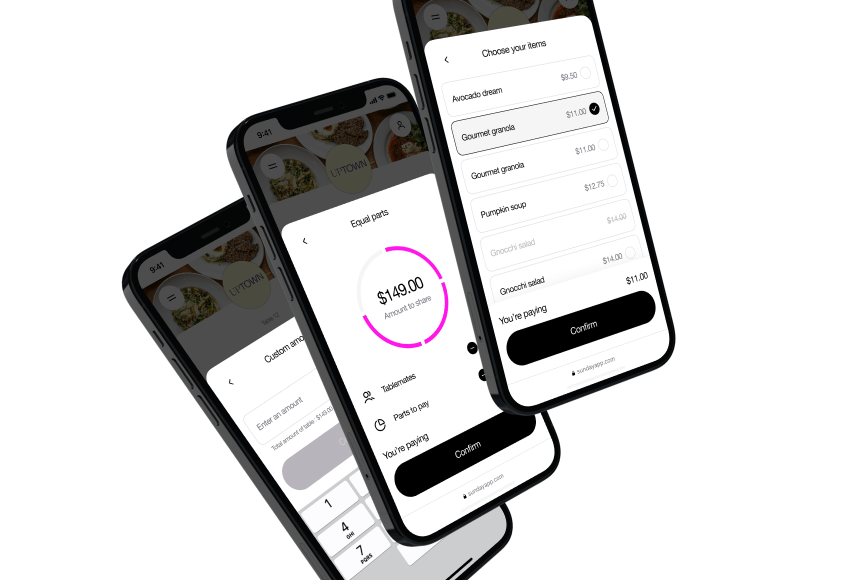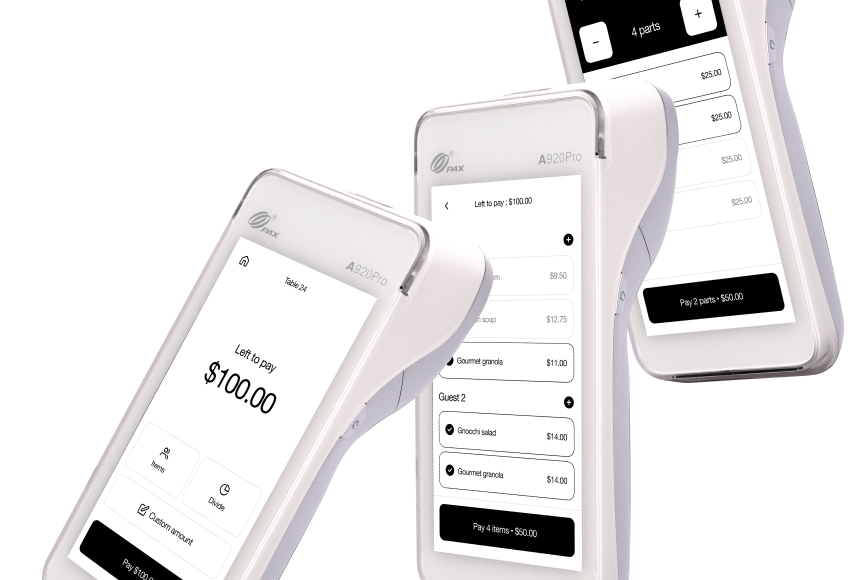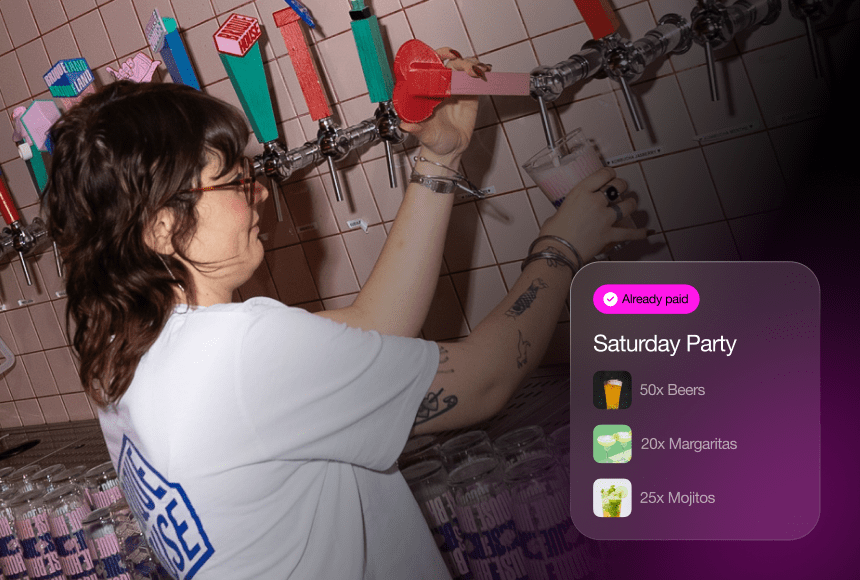
A Closer Look at Emerging Payment Trends for Restaurants
Where the Payment Revolution Stands Today
We’ve come a long way from the days when cash reigned supreme and credit cards were considered cutting-edge. Fast-forward to 2025, and the payment landscape has evolved at dizzying speed. Many consumers no longer carry a wallet stuffed with bills or even a traditional plastic card. Instead, digital wallets, biometric authorization, and yes, QR codes have taken center stage.
For restaurant owners, staying on top of these trends is no longer optional. Customers expect convenience and security, and they’re quick to notice if your payment methods lag behind. According to Statista (Mobile Payments), global mobile payment transactions have soared year over year, with more than half of consumers in certain demographics relying on a smartphone or contactless option.
Amid all these shifts, the QR code has emerged as a front-runner—particularly in restaurants. Simple, secure, and remarkably easy to adopt, QR codes have found fans across all age groups. Below, we’ll explore why QR codes are so popular, how they compare to other payment methods, and what this means for your restaurant.
The Rise of Contactless and Mobile-First Payments
Let’s begin by acknowledging the accelerated shift toward contactless transactions. Even before the global health crises of the early 2020s, consumers were gravitating to solutions that minimize physical contact. Tapping a phone, scanning a code, or using a biometric scanner felt cleaner and faster than handing over a card or counting out bills.
- Convenience: Few diners enjoy waiting for checks and credit card machines. Contactless options reduce these friction points, letting customers pay within seconds.
- Security: Mobile and QR code payments often come with built-in encryption or verification, lowering the risk of theft or fraud.
- Speed: Servers don’t have to shuffle back and forth with card readers. Diners handle the process from their own device, leaving staff free to focus on hospitality.
These factors paved the way for a broader acceptance of digital transactions. Add to that the near-ubiquity of smartphones, and you get a perfect environment for QR codes to flourish.
Why QR Codes Top the List
QR codes might look like a random pattern of black squares, but they hold powerful potential for restaurant owners. Here’s why they’re leading the pack in 2025:
- Zero App Required: Most smartphone cameras can now read QR codes without any additional apps. Guests simply point their camera, tap the link that appears, and access a payment page instantly.
- Low Setup Costs: All you need to generate a QR code is a reliable solution or platform, plus a printer for the code itself. You can place these codes on table tents, menus, or receipts—whatever suits your style.
- Adaptive User Experience: The code doesn’t just link to payment; it can guide diners to your menu, prompt for a tip, or even invite them to leave a review. Solutions like sunday unify these steps, making it nearly effortless for guests.
Given these perks, it’s no wonder QR codes have become a default payment choice in bustling metropolitan areas, quick-service chains, and independent bistros alike. They cater to a range of diners—tech-savvy millennials appreciate the speed, while older patrons can still find them easy to use if shown a quick how-to.
Other Popular Methods in the Mix
Even if QR codes are dominating headlines, they aren’t the only players in the payment realm. Let’s look at some competing technologies and where they stand.
1. Mobile Wallets (Apple Pay, Google Pay, etc.)
Mobile wallets have soared in popularity, especially for quick on-the-go purchases. They allow users to store their credit or debit cards in a digital format on their phone. While widely accepted in many retail settings, some smaller restaurants still lag behind in adopting the necessary NFC (Near Field Communication) readers.
- Pros: Secure, fast, recognized by major banks.
- Cons: Requires specialized hardware, doesn’t always integrate seamlessly with loyalty or tipping unless carefully set up.
2. Biometric and Wearable Payments
Paying with a smartwatch or using face/fingerprint scanning is another emerging trend. These methods are sleek and highly secure, but widespread adoption remains limited. Not all consumers own the latest devices, and some remain wary of biometric data usage.
- Pros: Unique, convenient if diners already have the devices.
- Cons: Often niche, hardware costs can be high, and not every restaurant is equipped to handle such specialized tech.
3. Traditional Cards—But with a Twist
Credit and debit cards aren’t disappearing. However, physical swipes are shifting to contactless “tap-to-pay” features. This upgrade shortens the transaction time, but still requires diners to wait for a server with a card reader, unless you bring portable card machines tableside.
- Pros: Familiar to most diners, no major learning curve.
- Cons: Usually slower than QR or mobile wallet, and still reliant on physical cards that can be lost or stolen.
Case Study: How QR Codes Speed Up Service
Consider a mid-size restaurant in a busy downtown district. On a Friday night, eight out of ten tables might be full. With a traditional approach, guests finish their meal and flag down a server for the check. The server prints out receipts, runs cards, returns for signatures, and possibly re-enters the tip amount. During peak hours, that repetitive motion can create mini traffic jams for staff.
By introducing QR code payments:
- Instant Check Retrieval: Each table has a code that, when scanned, shows the diner’s itemized bill. No waiting for a server to print anything.
- Simplified Tip Selection: The digital interface suggests a few tip percentages. Guests make a quick choice and confirm. That’s it.
- Built-In Feedback or Review Prompt: Once payment is done, the same interface can ask, “How was your meal?” or link them to post a Google review in seconds.
The result? Two or three minutes saved at each table. Less staff back-and-forth. A smoother transition for incoming guests. Multiply that across dozens of checks over a week, and the time savings are undeniable.
Integrating QR Codes with Loyalty and Customer Data
Imagine you could gently nudge a returning guest with, “You’re only five points away from a free appetizer—would you like to add our mozzarella sticks?” With a QR-based system, diners who scan their code can automatically log into your loyalty program.
- Personalized Offers: You can tailor promotions based on a diner’s order history. Maybe they always choose your special seasonal salad, so you highlight a similar new dish.
- Direct Communication: Once a guest is enrolled through the QR code, you can easily inform them of new menu launches or limited-time deals via email or text.
- Enhanced Metrics: Because each transaction is logged digitally, you get a bird’s-eye view of popular items, busy times, and average spend—valuable insights for adjusting everything from staff schedules to inventory.
In short, payment by QR code doesn’t just stop at collecting money. It opens the door to deeper engagement that can lead to higher ticket sizes and repeat visits.
Staying Accessible for All Diners
While QR codes and other digital methods may be in the spotlight, not every customer is ready to jump on board. Perhaps they prefer swiping a card or paying cash. The best strategy? Offer multiple channels.
Here’s how to keep it flexible:
- Visible Guides: Provide short instructions near each table’s QR code, letting people know they can scan with their camera app—no extra app needed. Just a simple line or two works wonders for those unfamiliar with the process.
- Option to Pay at the Counter: If a diner feels uneasy about digital methods, a traditional card machine or even a cash register remains on hand. They’ll appreciate the freedom of choice.
- Friendly Staff Training: Make sure your servers know how to quickly walk guests through a QR transaction. Most older or less-techy diners are game to try if they receive a little guidance.
Flexibility ensures you don’t alienate any segment of your customer base. Over time, even the skeptics may find themselves warming up to the speed and simplicity that QR codes provide.
What about Security?
Some restaurant owners worry about scanning codes from a security perspective. Are you opening a digital can of worms? The good news is that established QR payment solutions rely on secure, encrypted transactions—often as safe or safer than tapping a card.
Still, a few best practices can bolster trust:
- Partner with Reputable Tech Providers: Look for proven systems that highlight robust encryption and compliance with industry standards. Avoid any shady or unverified code generators.
- Host Staff Awareness: Teach servers to spot tampered codes. If someone replaced your official QR with a malicious one, that’s a risk. But daily checks for consistent signage and code integrity are typically enough.
- Encourage Digital Receipts: Let customers receive receipts via email or text. That further reduces paper clutter and provides a clear digital record of their purchase.
Overall, if your chosen technology partner follows rigorous security protocols, you’ll likely see fewer fraud concerns than you would with physical cards sliding in and out of your staff’s hands.
Is Your Restaurant Ready for 2025?
The race is on. Diners increasingly expect the convenience of scanning and paying in seconds. They want to skip fumbling for credit cards and slip away from the old-fashioned “please sign here” routine. That’s why so many restaurants are welcoming QR code payments, especially when integrated with solutions like sunday—the process becomes practically frictionless for staff and patrons alike.
Of course, other payment methods still hold a place. Mobile wallets remain popular, contactless cards aren’t going anywhere, and even cash has its loyal fans. But if you’re striving to match the demands of modern diners, ignoring QR codes could leave you behind.
So, is the QR code truly leading the way among payment methods in 2025? Judging by user adoption, the low entry cost for restaurants, and the instant synergy with loyalty programs and promotional campaigns, it’s hard to argue otherwise. And if you’re a restaurant owner curious to step up your game, exploring QR-based payments is a solid first move toward delivering the future of dining—today.
Find out more today
Drop us your details below and we’ll reach out within the next 24h



